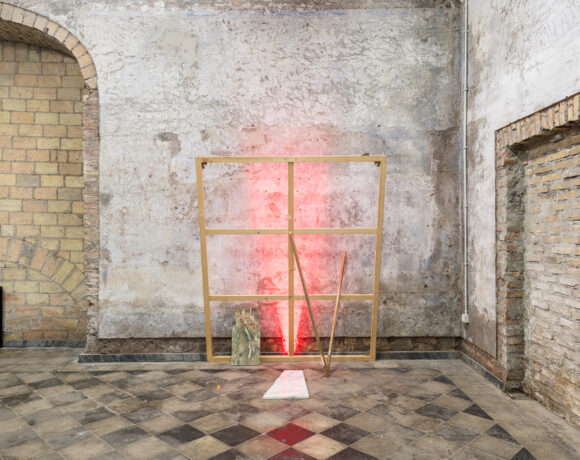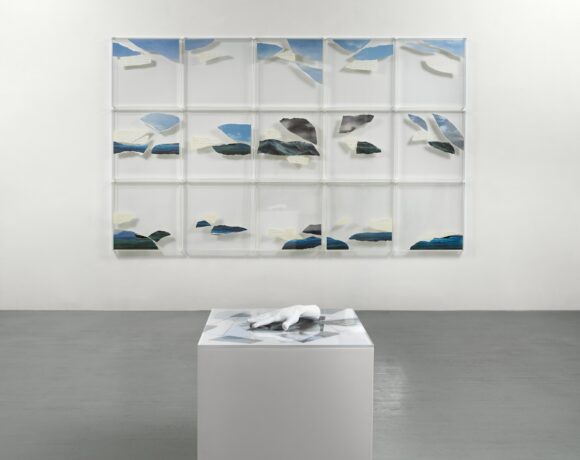These are the last days of the exhibition dedicated to the Turner Prize 2019, hosted at Turner Contemporary in Margate, a gallery overlooking the North Sea, designed by the architect David Chipperfield as a tribute to Turner who studied in Margate and here returned several times during his artistic career. As the flagship of the British contemporary artistic scene, the Turner Prize presents in this edition, the works of the finalists Lawrence Abu Hamdan (1985, Amman), Helen Cammock (1970, England), Oscar Murillo (1986, La Paila), and Tai Shani (1976, London) who have chosen the United Kingdom as their adopted home for their practice and artistic research, following their studies at institutions such as Goldsmith and the Royal College of Arts in London. This is already a noteworthy feature to understand the political stance that the exhibition is taking this year wherein all artists are at the forefront of a reflection on arts and society.
At Turner Contemporary, the exhibition composes a heterogeneous panorama of multiple voices which rethink art as a symptom of urgency by representing invisible realities which are true in their essence. In particular, Lawrence Abu Hamdan, presents the video Walled Unwalled, 2018, to apply the strategies of the panopticon with reference to the prison of Saydnaya in Syria to whom story the artist has been interested in with the support of Amnesty International. In his words, the video acts as ‘a private ear’ for a reality intentionally kept invisible, and the artist proposes here a different rhetoric that could take into account themes such as torture and human rights, through the meticulous configuration of visual, sound, performative, and architectural components. Not dissimilarly, Helen Cammock presents the project The Long Note, 2018, a 99-minute documentary that reflects on the role that feminism has played in Northern Ireland in the recent political history. Through an attentive archival research, the documentary is accompanied by a conceptual installation that emphasizes the importance of words and actions as matters of feminist concern.
The same line of thought underpins the practice of Oscar Murillo who rethinks the pictorial tradition of genres according by experimenting with materials and performative forms. In this sense, his work Violent Amnesia, 2018, reflects upon the history of migrations, with particular reference to Colombian realities, the artist’s country of origin, wondering how to communicate the importance of local specificities in the global contemporary context. At the conclusion of the exhibition, Tai Shani’s performative installation DC Semiramis, 2018, revisits in performative manner what is considered the proto-feminist book, The Book of the City of Ladies, 1405, by Christine de Pizan, putting on stage a city governed by women where to meet phantasmagorical and fictional figures. Intertwining times, stories, and places of imagination, the artist’s ideal city invites an active and interactive participation by placing the viewer in the condition to revisit the past to rethink the future.
It happens that the assignment of the Turner Prize 2019 exemplarily confirms the political stance of the exhibition through the unanimous decision of the jury, to award the prize, for the first time in the 35 years of history of the Turner Prize, to all the selected artists in order to address a ‘symbolic gesture of cohesion’ that aims at ‘extending the meaning of what it means to be British today’. As reported by The Guardian journalist Mark Brown, who followed the award ceremony held on December 3 at the presence of Alex Farquharson, director of TATE Britain, and Edward Enninful, editor of British Vogue, this request was raised by the artists themselves who, before each evaluation, submitted a joint statement to the jury in which they expressed their desire to put aside individuality to rethink art as a matter of political emergency.
Never as this year, in fact, the Turner Prize has addressed issues related to themes such as war, migration, and human rights, as we read in the words of the artists: ‘the policies we deal with are significantly different, and it would be problematic for us, if it were chosen a single theme, which would mean that one theme is more important or significant than another … In this moment of political crisis … when there are many factors that want to divide and isolate people and communities, we have strongly felt the need to use the opportunity of the award to create a collective statement in the name of community, multiplicity, and solidarity. Certainly, the edition of the Turner Prize 2019 marks a historical moment and gives a significative sign for the role that art can play through the complexity of its own language, far from the conventions and canonical forms of representation, but immersed in the real instances of its own time.
Info:
Turner Contemporary
28 September 2019 – 12 January 2020
Margate
 Turner Contemporary, photo Richard Bryant
Turner Contemporary, photo Richard Bryant
 Helen Cammock, video still from The Long Note Courtesy the artist
Helen Cammock, video still from The Long Note Courtesy the artist
 Lawrence Abu Hamdan, installation view of Walled Unwalled in The Tanks, Tate Modern London 2018. Photo by Tate Photography
Lawrence Abu Hamdan, installation view of Walled Unwalled in The Tanks, Tate Modern London 2018. Photo by Tate Photography
 Tai Shani, installation view of DC: Semiramis, Glasgow International 2018. © Keith Hunter. Courtesy the artist
Tai Shani, installation view of DC: Semiramis, Glasgow International 2018. © Keith Hunter. Courtesy the artist
 Oscar Murillo, installation view of Collective Conscience 2018 at the 10th Berlin Biennale, 9th June – 9th September 2018. Photograph by Timo Ohler © Oscar Murillo. Courtesy the artist and David Zwirner
Oscar Murillo, installation view of Collective Conscience 2018 at the 10th Berlin Biennale, 9th June – 9th September 2018. Photograph by Timo Ohler © Oscar Murillo. Courtesy the artist and David Zwirner

She is interested in the visual, verbal and textual aspects of the Modern Contemporary Arts. From historical-artistic studies at the Cà Foscari University, Venice, she has specialized in teaching and curatorial practice at the IED, Rome, and Christie’s London. The field of her research activity focuses on the theme of Light from the 1950s to current times, ontologically considering artistic, phenomenological and visual innovation aspects.






NO COMMENT